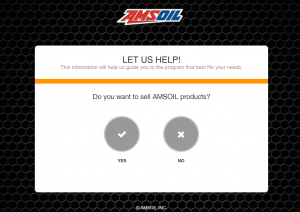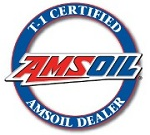Another great article in this months AMSOIL Magazine. I’ve written articles in the past on zinc and how AMSOIL has products for engines and customers that are looking for high zinc oils.
Today’s article addresses the other side of the zinc issue especially when dealing with emissions controls systems in modern cars.
We hope you enjoy the article
Zinc dialkyldithiphosphate provides proven wear protection.
But its incompatibility with pollution-reduction devices severely limits its use in modern motor oils.
by Dan Peterson | Vice President, Technical DevelopmentAs today’s automotive engines push the envelope seeking higher fuel economy and lower emissions, the demands placed on motor oil are escalating. This push for improved performance is nothing new. Racers and muscle-car owners have long looked for ways to squeeze more horsepower from their vehicles. This is often done in vintage cars by modifying the engine, while tuner enthusiasts usually focus on computercontrolled performance improvements. Whatever your preferred method, it puts more stress on engine components, and the oil must protect parts from wear even as they are pushed beyond the limits of OeM design. This is where the most recognized anti-wear additive, zinc dialkyldithiophosphate (ZDDP), comes into the picture.
ZDDP is very good at reducing wear and improving oxidation stability. It also exhibits mild extreme-pressure (eP) protection. ZDDP contains both zinc and phosphorus components that work together to provide anti-wear protection and minimize lubricant breakdown. Specifically, ZDDP helps protect high impact surfaces like camshaft lobes, lifter surfaces and rockers against wear. As temperatures rise and surfaces come closer together, ZDDP decomposes and the resulting chemistry is what protects the critical metal surfaces. When parts move during operation, any sliding or rolling motion takes place on top of or within the ZDDP anti-wear film, which reduces metal-to-metal contact. This is especially important in modified engines with flat-tappet camshafts because the engine is creating more horsepower than it was designed for, which puts more stress on the engine. The camshaft and lifters are responsible for triggering the precisely tuned movements of the valvetrain. Without the protective film barrier provided by ZDDP, the cams and lifters will wear from the force of operation, resulting in poor performance. All engines benefit from oils with superior film strength and antiwear properties, so why don’t all motor oils have boosted levels of ZDDP? It’s back to the goal of improving emissions systems performance. Generally, ZDDP used in high levels results in volatile phosphorus being transferred from the combustion chamber to the catalytic converter. Like with lead in 1970s gasoline, phosphorus can blind over the catalytic reaction sites in the converter, making it less efficient in turning carbon monoxide (CO) into carbon dioxide (CO2). The ePA mandates that catalytic converters operate as designed for more than 100,000 miles. As a result, ZDDP levels are now limited for newer motor oil specifications. The largest portion of the volatile phosphorus is generated right after you change your oil. So the more you change your oil, the more your catalytic converter is exposed to this volatile phosphorus. Conversely, longer drain intervals can limit the negative impact of volatile phosphorus on catalytic converters.
Both engine technology and oil technology have evolved over the years. Today’s performance engines have very different oil requirements compared to older engine designs from the 1960s and 1970s. Many new engines use roller cams, which aren’t as sensitive to ZDDP anti-wear protection as older flat-tappet camshafts and solid lifters. Older engines equipped with flat-tappet cams require higher levels of anti-wear/mild eP (ZDDP) than today’s engines. This area in an engine is exposed to extreme contact load. Since this load increases significantly when non-stock, high-pressure valve springs are used, the use of properly formulated motor oils is extremely important to reduce wear and extend flat-tappet and camshaft life, especially during the critical break-in period. Since the amount of zinc and phosphorus in oils formulated for today’s automobiles has been greatly reduced and newer API oils are not designed specifically for older-style, modified engines, engine wear can be a major issue.
AMSOIL manufactures a complete line of motor oils tailored to meet the specific needs of classic cars and other vehicles requiring higher anti-wear/mild eP protection. AMSOIL Z-rOD® Synthetic Motor Oil (ZrT, ZrF) is designed with the level of anti-wear/mild eP required to safely protect older and modified engine designs such as those with flat-tappet camshafts. It is also designed specifically to resist rust and corrosion that attacks engines during periods of inactivity and storage. AMSOIL DOMINATOr® Synthetic Motor Oil (rD20, rD30, rD50, rD60) is formulated similarly, but more for true racing applications. This makes it the right choice for muscle cars, street rods and other high-performance vehicles with flat-tappet camshafts. AMSOIL break-In Oil (brK) is designed to work quickly in new and rebuilt highperformance and racing engines. This SAe 30 viscosity grade oil features a no-friction-modifier formula that helps induce controlled wear in rings to help mate and seat piston rings. It also has very high levels of ZDDP.
Whether you’re a classic-car enthusiast, hot rodder, tuner or drifter, your equipment may require the protection provided by these products. Knowledge is power; but we want you to experience maximum power from your engine also!
Related Posts:





Trackbacks/Pingbacks